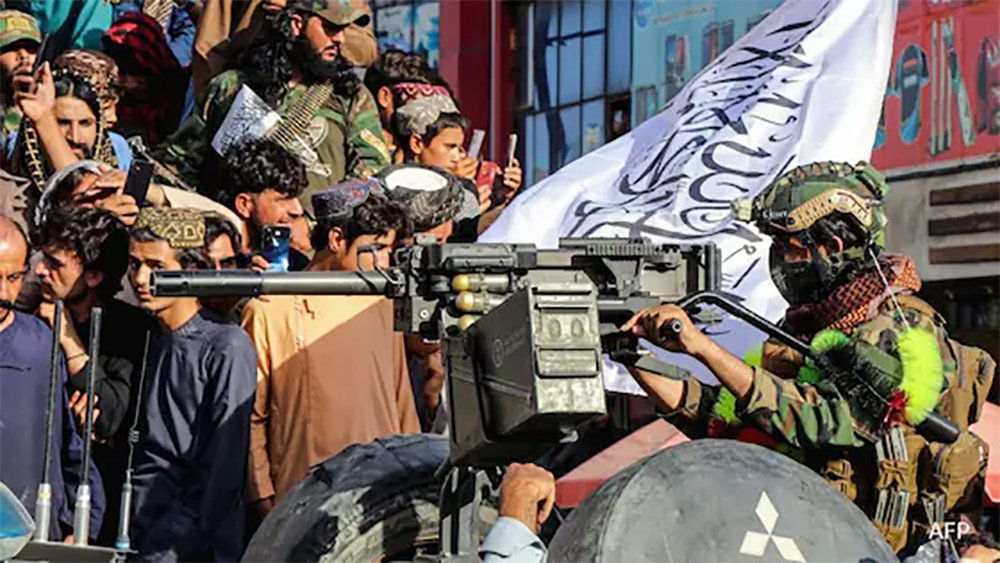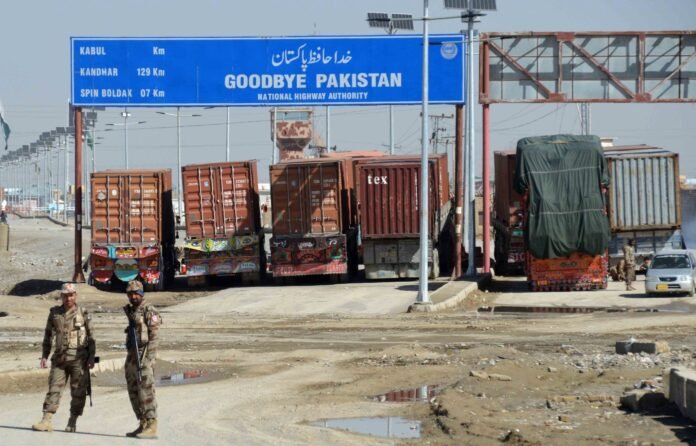Guns have fallen silent along the Afghanistan–Pakistan (Af-Pak) border after a series of deadly clashes between the Taliban and Pakistani forces. However, the ceasefire currently maintaining this fragile calm remains tenuous. The conflict has tested the limits of strategic patience and restraint, resulting in a near-total loss of face between Islamabad and Kabul. Pakistan’s once-vaunted concept of “strategic depth” in Afghanistan has now been reduced to a symbolic relic, stripped of any real substance. In this transformed regional landscape, New Delhi finds itself presented with an opportunity to recalibrate its Afghan strategy and develop its own strategic depth to counter Pakistan’s waning influence.
The Taliban enjoyed Pakistan’s patronage for decades, from the Afghan–Soviet war period until the late 1990s, when Islamabad began using the Taliban as a key instrument in its “strategic depth” policy against India. During this time, Pakistan facilitated the operations of the Pakistan-based terror outfit Lashkar-e-Taiba (LeT) from Afghan soil, using areas such as Khost, Jalalabad, and Kandahar as training and logistical hubs to launch attacks in Jammu and Kashmir (J&K). This approach proved particularly effective during the late 1980s and 1990s, enabling Pakistan to destabilise India’s frontier state through proxy warfare.
Following the September 11, 2001 attacks, the United States (US) launched its global “War on Terror” and dislodged the Taliban regime through the Central Intelligence Agency’s (CIA) Operation Jawbreaker. Despite this setback, Pakistan’s Inter-Services Intelligence (ISI) managed to reorganise its strategy through the Haqqani Network, relocating its core leadership to Pakistan’s Federally Administered Tribal Areas (FATA), especially North Waziristan.
While Pakistan publicly aligned with Washington as a key ally in the War on Terror, covertly it continued to nurture and strengthen the Haqqanis through complex financial syndicates and criminal networks extending into the Persian Gulf. The ISI’s clandestine S Division, responsible for managing terror proxies, revived Pakistan’s strategic depth policy by connecting the Haqqanis with other jihadist organisations such as LeT and Jaish-e-Mohammed (JeM).
The Taliban’s evolving autonomy and internal rifts have left Pakistan’s ISI without its once-reliable proxies. The collapse of the Haqqani alliance and growing hostility with the TTP mark the end of Islamabad’s decades-old leverage in Kabul
The Haqqani Network’s first major strike against India came in July 2008 with the bombing of the Indian Embassy in Kabul, followed by another attack in October 2009. Until 2011, the ISI–Haqqani nexus continued to target Indian consulates, infrastructure projects, and training facilities in Afghanistan, forcing India to scale back its presence and diminish its strategic footprint in the region.
Pakistan’s dual strategy—offering public cooperation with the US while covertly sponsoring terrorism—yielded short-term gains. It provided Islamabad plausible deniability through the Haqqanis’ intricate operational networks while sustaining Pakistan’s strategic depth even after the Taliban’s fall. By engaging the Haqqanis to moderate the Tehreek-e-Taliban Pakistan (TTP), Islamabad sought to contain domestic militancy. Until 2021, Pakistan employed a hybrid strategy combining political engagement, logistical assistance, and financial backing of the Haqqanis and other militant proxies.
Breaking Strategies and Fractured Camaraderie
The Taliban’s takeover of Kabul in August 2021 was initially hailed as a victory in Pakistan, reigniting dreams of restored influence in Afghanistan. Yet, Islamabad soon discovered that it was dealing not with the pliant Taliban of the 1990s but with a more autonomous and assertive movement seeking international legitimacy. This shift in power dynamics led to recurring border skirmishes, mounting political frictions, and the unresolved issue of the TTP.
Islamabad expected the Taliban to curb the TTP’s attacks on Pakistan, but the Taliban leadership failed to deliver, leading to the breakdown of the ceasefire between the TTP and Pakistani forces. Pakistan’s final hope rested on the Haqqani Network, long seen as its most dependable proxy. However, even this relationship crumbled when Sirajuddin Haqqani fell out with the Taliban’s supreme leader, Hibatullah Akhundzada, over taxation rights in Haqqani-controlled areas and restrictions on women.
The ideological split between the Haqqanis, who are considered relatively moderate, and Akhundzada’s hardline faction deepened Pakistan’s isolation. With its ties to both the Haqqanis and the Taliban strained, and the TTP continuing to mount attacks, Pakistan’s decades-old doctrine of strategic depth effectively collapsed. The recent full-scale cross-border offensives have underscored that this strategy is now defunct. Islamabad may attempt to adapt, but doing so will be extremely difficult, especially as India manoeuvres to expand its influence in Kabul and restrict Pakistan’s remaining options.
Old but a Failed Playbook
Pakistan’s earlier strategy of relocating Taliban and Haqqani leadership to FATA and maintaining cross-border jihadist linkages ultimately backfired. The region became a breeding ground for global jihadist ideologies, with Al-Qaeda playing a decisive role in the creation of the TTP and persuading local militant groups to turn against Pakistan itself.
The Tehreek-e-Nafaz-e-Shariat-e-Mohammadi (TNSM), formed in 1992 to impose Sharia law, re-emerged after 2001 under Sufi Mohammad, only to face a crackdown by General Pervez Musharraf’s regime. Yet, under Sufi Mohammad’s son-in-law, Maulana Fazlullah, the group revived, broadcasting extremist ideology through his infamous “Mullah Radio.”
Al-Qaeda’s presence in South Waziristan contributed to multiple assassination attempts on Musharraf in 2003 and the rise of sectarian outfits like Lashkar-e-Jhangvi, which carried out Shia mosque bombings in Quetta. By 2004, under Al-Qaeda’s guidance, tribal militant leaders such as Nek Mohammad in Shakai Valley transformed local militancy into a transnational jihadist movement, even hosting Central Asian figures like Tahir Yuldashev of the Islamic Movement of Uzbekistan (IMU).

To defuse this threat, Pakistan brokered the Shakai Valley Agreement in 2004, compelling militants to lay down arms and expel foreign fighters. Yet Nek Mohammad betrayed the accord, sheltering Al-Qaeda and Uzbek militants while sustaining cross-border terrorism.
The Turnaround
Realising that its proxies had spun out of control, Pakistan’s ISI collaborated with the CIA to eliminate key militant figures. In 2004, the CIA launched its first drone strike in Pakistan, killing Nek Mohammad. This marked the beginning of a deeper US–Pakistan counterterrorism partnership, with Islamabad providing intelligence on tribal militants while the US conducted drone operations that decimated Al-Qaeda networks.
However, after 2007, Washington’s focus shifted, and Pakistan’s cooperation declined as domestic insurgency intensified. The formation of the TTP in 2007 further destabilised Pakistan. Between 2008 and 2014, several peace deals between Islamabad and the TTP collapsed due to ideological rigidity and mistrust.
By moving beyond a policy of cautious restraint, India can expand its diplomatic and security footprint in Afghanistan. Reviving its “double squeeze” strategy may help New Delhi engage Pakistan on both fronts—east and west—while reinforcing its broader Look West and Central Asian outreach
The 2011 US raid in Abbottabad to kill Osama bin Laden under Operation Neptune Spear severely damaged mutual trust, sidelining Pakistan from US intelligence operations. The Taliban’s return to power in 2021 briefly rekindled US–Pakistan cooperation, evidenced by Pakistan’s role in facilitating the drone strike that killed Al-Qaeda chief Ayman al-Zawahiri in Kabul and the arrest of ISIS-K operative Mohammad Sharifullah, responsible for the Abbey Gate bombing.
As of 2025, Pakistan faces simultaneous threats from the Taliban and the TTP. Its air strikes in Kabul—coinciding with the Taliban foreign minister’s visit to Delhi—signalled Islamabad’s bid to reassert influence and perhaps revive its counterterrorism partnership with the US. For Washington, weakening the Taliban could once again expand operational reach in Afghanistan, reflecting the enduring American interest in regaining leverage over the region, exemplified by past debates over control of Bagram Air Base.
India’s Strategy
For India, this moment offers a unique strategic opening. New Delhi must avoid the past error of adopting a cautious, low-risk approach that yielded only limited tactical gains. Instead, India can now actively pursue strategic engagement in Afghanistan as part of its broader Look West and Connect Central Asia policies, enabling it to create genuine strategic depth against Pakistan while contributing to regional stability.
India’s recent decision to upgrade its technical mission at the Embassy in Kabul signals a willingness to move beyond mere functional diplomacy. By engaging pragmatically with the Taliban government, India can secure its investments, strengthen intelligence networks, and counter terror threats emanating from the Af-Pak belt.
New Delhi could also revitalise its double squeeze strategy—diverting Pakistan’s resources and military focus simultaneously on its eastern and western borders. This would not only weaken Pakistan economically and militarily but also complicate its engagement with the United States, creating a “triple gamble” that limits Islamabad’s manoeuvrability. Crafting such a multi-layered approach will be key to establishing India’s long-term strategic depth in Afghanistan and consolidating its position as a pivotal player in regional geopolitics.
The writer is a national security analyst specialising in intelligence and strategic affairs. He has worked extensively with national security and foreign policy think tanks of repute, and has written for publications including The Telegraph, The Print, Organiser, and Fair Observer. He has also been a guest contributor to the School of International Studies at Jawaharlal Nehru University (JNU).






